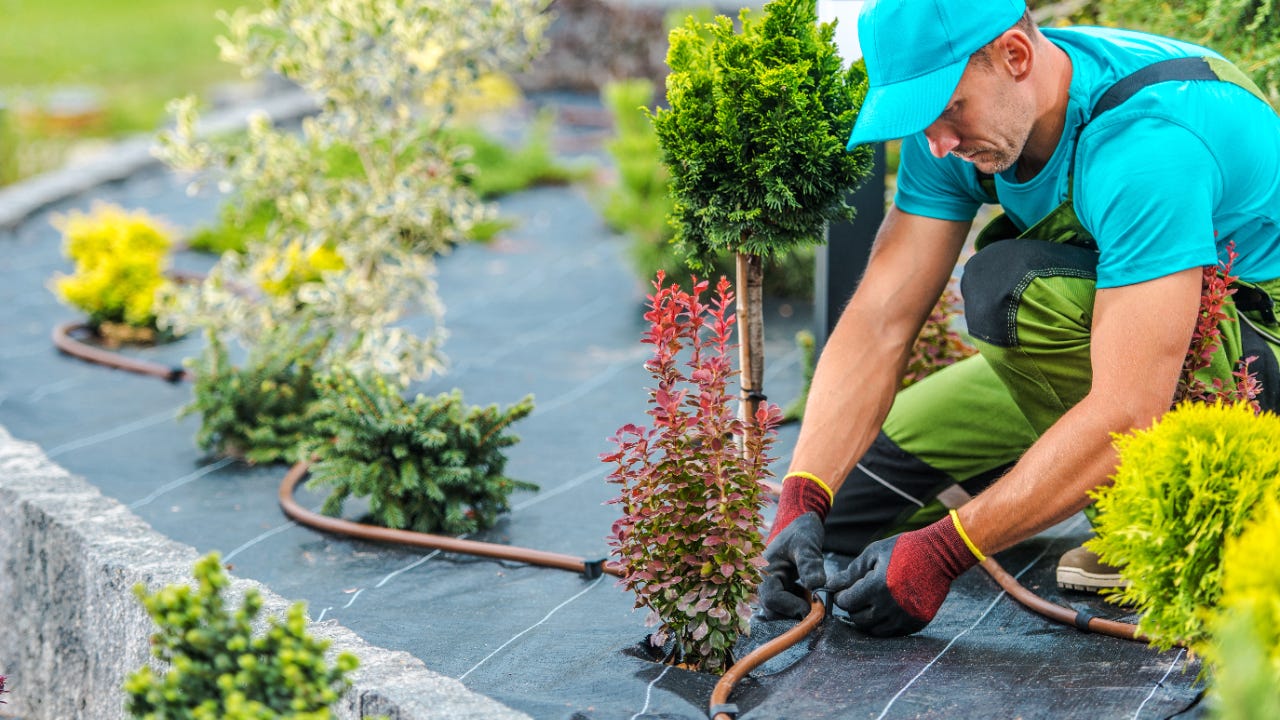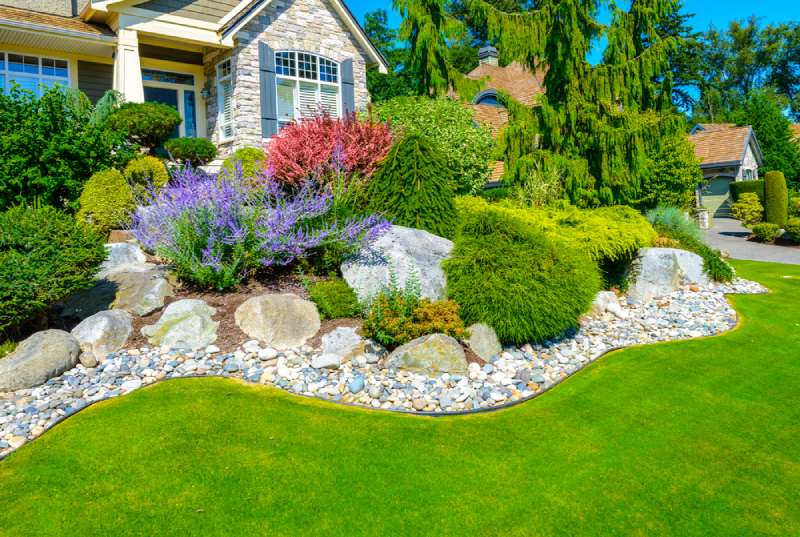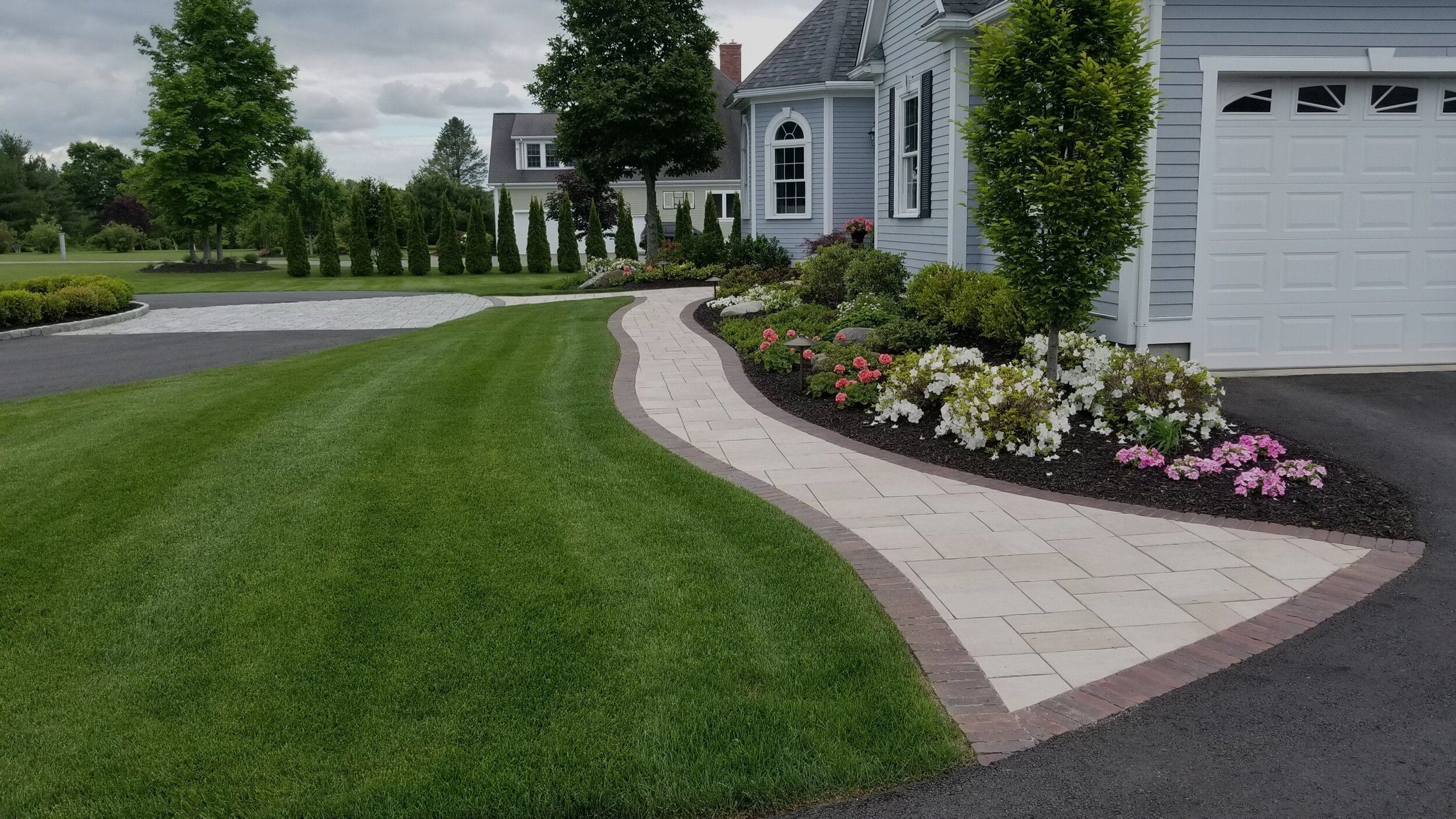Leading Tips for Enhancing Your Yard with Palm Desert Landscaping Concepts
A Comprehensive Overview to Designing and Implementing Effective Landscaping Solutions
The art and science of landscape design prolong past plain visual appeals; they include a thoughtful combination of layout concepts, environmental stewardship, and practical implementation. What approaches can one employ to ensure these landscapes not just grow however also thrive in consistency with their environments?

Recognizing Landscape Layout Principles
One could wonder what foundational elements add to efficient landscape design. At its core, effective landscape design pivots on a number of key concepts that assist the plan and selection of aspects within a space. These concepts include unity, proportion, rhythm, and equilibrium, each offering to create an unified outside environment.
Unity describes the cohesive partnership amongst various components, making sure that they function together cosmetically and functionally. Balance can be accomplished through balanced or asymmetrical arrangements, enabling the landscape to really feel stable and inviting. Percentage entails comprehending the range of aspects in regard to each various other and the surrounding environment, promoting aesthetic consistency and convenience.

Evaluating Your Outdoor Space
Prior to implementing the concepts of landscape design, a thorough evaluation of your outdoor space is crucial. This first examination helps define the range of your landscaping task and guarantees that your layout aligns with the one-of-a-kind characteristics of your residential property. Begin by assessing the dimensions of your space, taking precise measurements to recognize the available area for numerous elements such as patios, yards, and paths.
Next, observe the existing functions of your landscape, including topography, soil quality, and water drainage patterns. These factors substantially affect plant option and placement. Additionally, examine the sunshine direct exposure across various locations throughout the day, as this will impact the kinds of plants that grow in your yard.
Think about the microclimates produced by structures, trees, and various other barriers, as they can impact temperature and dampness degrees. Take note of any type of existing plants or hardscape aspects that you want to remove or retain. This detailed assessment prepares for a educated and efficient landscaping remedy, making sure that your design is not just aesthetically pleasing yet likewise useful and sustainable for many years ahead.
Sustainable Landscaping Techniques
These techniques not just promote ecological balance however additionally enhance the aesthetic and practical worth of a landscape. Implementing efficient irrigation systems, such as drip watering, lessens water waste and makes certain that plants receive sufficient wetness (Palm Desert Landscaping).

One more efficient technique is the calculated placement of shrubs and trees to supply natural windbreaks and shade, hence decreasing energy expenses (Palm Desert Landscaping). Rainfall yards can be integrated right into the landscape design to take care of stormwater YOURURL.com overflow properly, filtering pollutants before they go into rivers
Picking the Right Plants
Choosing the right plants for your landscape is vital to achieving both aesthetic allure and environmental harmony. The procedure begins with an understanding of your neighborhood environment, dirt conditions, and the particular microenvironments within your landscape. Assessing factors such as sunshine exposure, moisture levels, and existing flora will certainly help you pick plants that grow in your one-of-a-kind setting.
Think about incorporating indigenous plants, as they are well-adapted to neighborhood conditions, require less maintenance, and assistance local wild animals. Furthermore, selecting a diverse variety of varieties can boost biodiversity while lowering the threat of illness and bug episodes. It is vital to review the development routines, flowering periods, and seasonal colors of possible plants to develop a dynamic and natural landscape.
Moreover, believe about the intended use the area; for instance, if the area will certainly experience high foot web traffic, select resilient ground covers. By attentively selecting plants that align with both your ecological needs and visual goals, you can create a lasting landscape that not only enhances your building however also adds positively to the bordering environment.

Implementation and Upkeep Approaches
Once the best plants have actually been picked for your landscape, the focus shifts to efficient application and recurring maintenance techniques. Successful setup starts with correct site preparation, which includes soil screening to figure out nutrient degrees and pH, adhered to by amending the soil as needed. Thoroughly set up plants according to their development behaviors and light needs, ensuring adequate spacing to promote healthy growth.
Irrigation is a vital aspect of application. Develop a watering routine that thinks about the certain needs of each plant types, changing for seasonal changes. Utilizing drip irrigation systems can enhance water performance and lower drainage.
Upkeep methods need to be carried out to make sure the durability and vitality of your landscape. Regular tasks consist of weeding, mulching, and trimming to manage growth and prevent disease. Fertilizing must be carried out based upon dirt examinations, providing the needed nutrients without over-fertilizing.
Monitoring for pests and conditions is vital; early detection can protect against substantial damage. Lastly, seasonal changes to maintenance routines, such as winterizing perennials and preparing for springtime growth, will make sure that your landscape stays healthy and aesthetically appealing year-round.
Final Thought
Effective execution and recurring maintenance even more make sure the long life and vigor of landscapes. By incorporating these components, landscapes can be transformed into gorgeous, functional atmospheres that promote biodiversity and add favorably to neighborhood wellness.
One click for source may question what official site fundamental components add to reliable landscape layout. At its core, effective landscape style pivots on a number of essential concepts that direct the plan and choice of aspects within an area.Choosing the right plants for your landscape is important to accomplishing both visual charm and ecological harmony. It is important to evaluate the development habits, growing durations, and seasonal shades of prospective plants to produce a dynamic and natural landscape.
As soon as the ideal plants have been chosen for your landscape, the emphasis changes to efficient application and ongoing upkeep approaches.